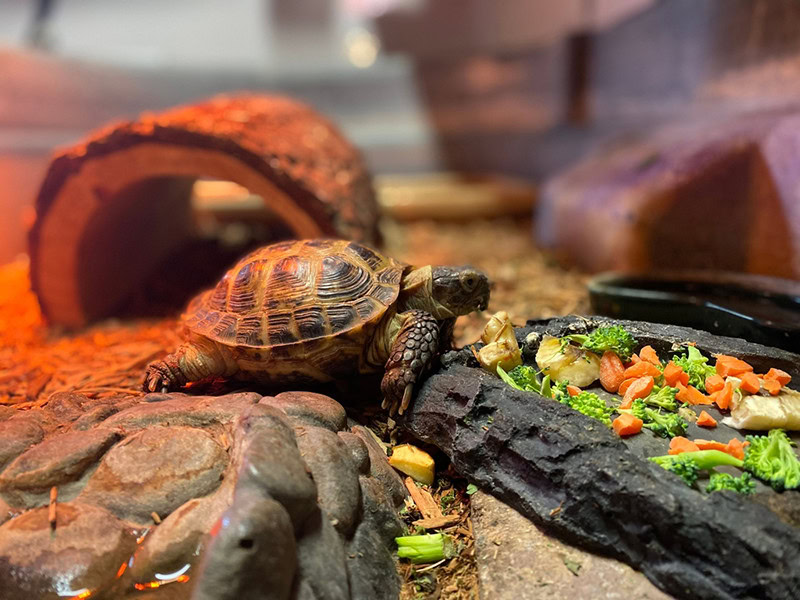How Hard Is a Turtle Shell? Strength, Reasons & FAQ

Updated on
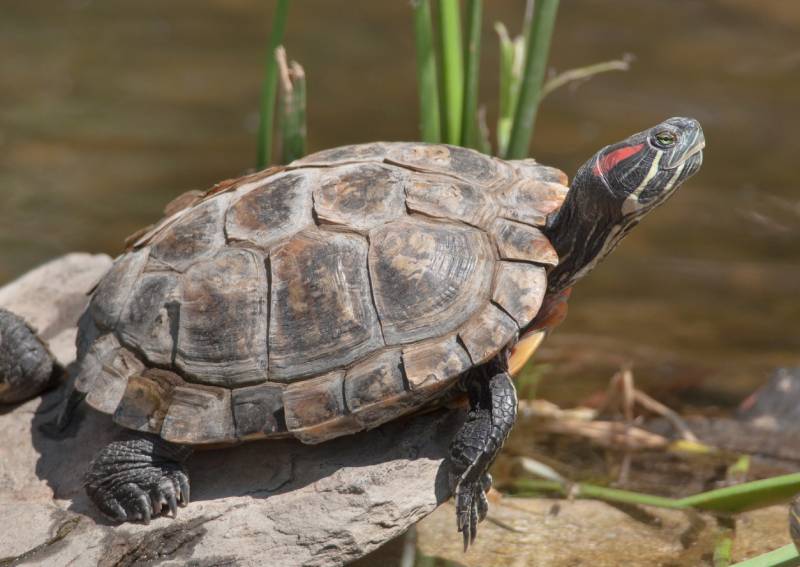
Turtles are classified as reptiles that have a shell protruding from their ribs. Most of the shell, which comprises three parts, is made up of bone, with some additional shell cover being made up of keratin. The shell is designed to protect the turtle from predators.
The strongest part of a turtle shell, which is the spine area along the top of the shell, can withstand pressure of up to 1,000 pounds, or 20 times the weight of the turtle. This is thanks to a combination of the strength of the bone and keratin compounds as well as the shape of the shell itself.
It isn’t impenetrable, however. Many predators, including alligators, crocodiles, and honey badgers, can break the shell. A car would also cause the shell to smash, and so too would a bullet. And, different species of turtles have shells of different strengths.
Read on for more information about turtle shells and exactly how strong they are.
About Turtles
Turtles are an order of reptiles that are characterized by their shells. The order includes tortoises, as well as sea turtles and terrapins, as well as other non-aquatic turtles. They are not only one of the oldest reptile groups in the world but one of the oldest orders of animals, having been around more than 200 million years ago, since the time of the dinosaurs. They are older than snakes, crocodiles, and alligators.
It is a misconception that turtles live inside their shells. Instead, their shells are an extension of their ribs, so are more akin to an extra layer of skeleton on the outside of their body. Some species of turtles can live more than 150 years, but almost half of the species in the world today are either at threat of extinction or considered vulnerable to being at threat.
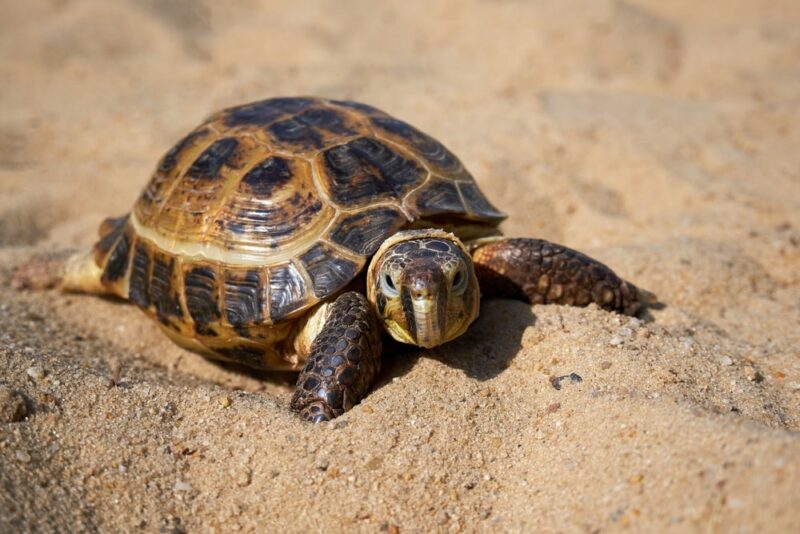
What Are Turtle Shells Made Of?
Turtle shells are part of the turtle’s skeletal structure and are, effectively, an extension of the rib cage. As such, most of the shell is made up of bone. The carapace, which is the section of shell on top of the turtle, is covered in pieces called scutes. Rather than being made of bone, these scutes are made of keratin, which is the same compound that fingernails and hair are made of. Underneath a turtle, there is a shell called the plastron, which is also made of bone, like the bridge that connects the upper carapace to the lower plastron.
How Hard Is a Turtle Shell?
Living in challenging environments and surrounded by predators ranging from alligators and sharks to coyotes and honey badgers, turtle shells are built to be incredibly tough. Although the exact strength of a shell depends on the species of turtle it is from, experts claim that turtle shells can withstand pressures up to 20 times the turtle’s own weight. In some cases, they can withstand up to 1,000 pounds of direct pressure. However, this does assume that the pressure is applied evenly across the strongest section of the shell, which is a central line running from front to back and on the top of the shell. Other sections are weaker.
Turtle Shells vs Humans
Even though humans are turtles’ greatest predators, hunting them for food and keeping them as pets, the turtle shell can withstand human hands. A human punches with around 400 pounds of force, so a turtle shell is more than able to withstand this kind of pressure. However, kicks can carry 1,000 pounds of strength, potentially more from trained professionals, and one might crack a turtle shell.
A bullet generates more than 15,000 pounds of pressure when it is fired, which means it is more than capable of shattering a turtle’s shell.
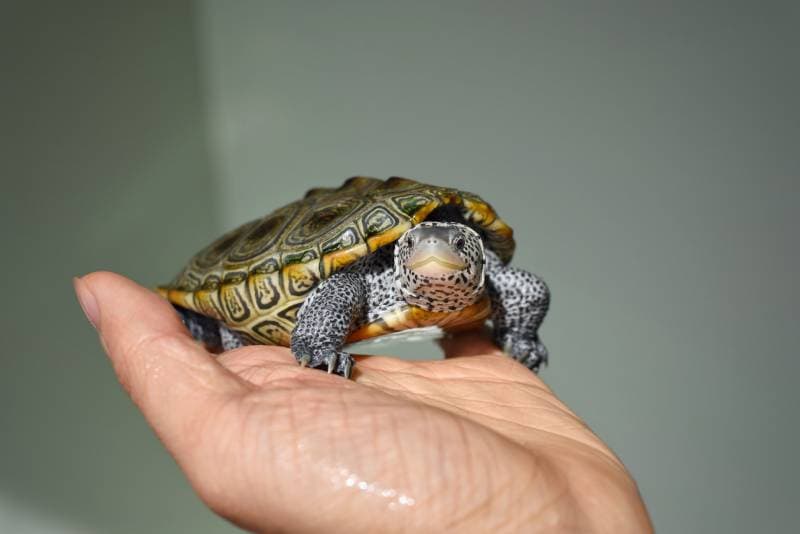
Turtle Shells vs Cars
Cars are a common cause of death in some species of turtles. Turtles can only move at maximum speeds of up to around 3 miles per hour, and they generally move slower than this. This means that turtles are especially prone to being hit by cars when they are trying to cross roads. Even the smallest cars weigh more than 2,000 pounds and are more than capable of destroying a turtle shell and killing the turtle. Even a glancing blow from a car would be enough to prove fatal for an unfortunate turtle.
Turtle Shells vs Predators
Turtle predators vary according to the species of turtle and their habitat. Sea turtle shells are not as strong as tortoise shells and can likely only take a few hundred pounds of pressure. Yet they have to face sharks and even whales that will try to eat them. A shark bite can have 1,200 pounds of force or more and is more than capable of breaking a turtle shell. Crocodiles can bite with more than 3,000 pounds of force. Even honey badgers, which may not seem as formidable as sharks or crocodiles, have enough bite force to get through a turtle shell.
Can Turtles Feel Pain in Their Shells?
As well as being an extension of their ribs, turtle shells have nerve endings that run to the end of the shell. This means that they can feel pain in their shell, and they can even tell when they are being tapped or even stroked on their sensitive carapace.
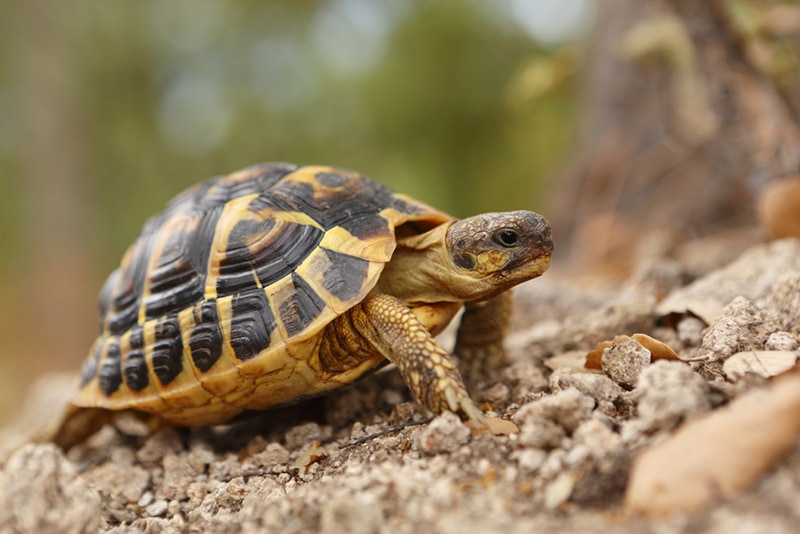
Can a Turtle Live Without Its Shell?
The shell of a turtle does serve as protection against predators and damage, but it also serves a host of other functions, including protecting against bacteria. The shell forms a part of the turtle’s anatomy and because it contains nerve endings and is part of their skeletal structure, a turtle would likely die straight away if its shell were smashed. Even if it did initially survive, it would only last a matter of minutes.
What Happens If a Turtle Cracks Its Shell?
Turtles can survive a cracked shell, and many pet turtles and tortoises do. In time, the shell will recover, and because pet turtles do not have natural predators, they will be able to stay alive while the shell recovers. This isn’t true of wild turtles, however, and a cracked shell can lead to bacterial infection while also making the turtle an easy target for predators.
Conclusion
Turtles are reptiles that are characterized by their shells, which form part of the skeletal structure. The shells protect their internal organs and especially protect against attacks from predators. Made primarily from bone, the shells of some turtles can withstand up to 1,000 pounds of pressure, and while this does make them very strong, it isn’t enough to protect against the likes of sharks, alligators, honey badgers, bullets, or cars.
Featured Image Credit to: Gerald A. DeBoer, Shutterstock


